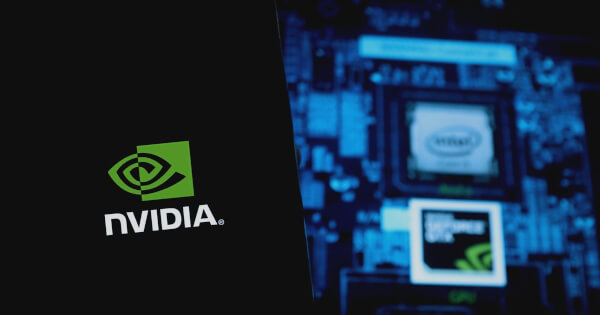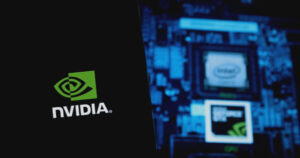Unlocking New Potentials: NVIDIA NCCL 2.23 Enhancements for AI and HPC
By Ted Hisokawa
Published on Jan 31, 2025
In the ever-evolving world of artificial intelligence (AI) and high-performance computing (HPC), the tools we use are critical to pushing the boundaries of what’s possible. NVIDIA’s latest software release, the Collective Communications Library (NCCL) 2.23, is set to transform inter-GPU and multinode communication, establishing new performance benchmarks that are particularly vital for demanding applications.

What Does NCCL 2.23 Bring to the Table?
NCCL 2.23 introduces several key features designed to enhance parallel computing capabilities. Let’s delve into these improvements and understand how they could impact your AI and HPC projects:
-
Parallel Aggregated Trees (PAT) Algorithm:
This revolutionary algorithm optimizes both ReduceScatter and AllGather operations, achieving logarithmic scaling. As a result, it ensures better performance with small to medium message sizes—ideal for processing intricate data sets typical in AI model training. -
Accelerated Initialization:
Efficiency takes center stage with the introduction of thencclCommInitRankScalableAPI. This feature enhances performance by enabling in-band networking for bootstrap communication, easing the initialization process across nodes and mitigating the bottleneck that often occurs in large-scale operations. -
Intranode User Buffer Registration:
This enhancement allows for more efficient data transfer between GPUs, significantly reducing memory overhead. By leveraging registered user buffers, applications can enjoy improved communication overlap while optimizing resource utilization across systems. - Profiler Plugin API:
As GPU clusters grow in complexity, so does the need for refined monitoring tools. The new profiler plugin API allows for precise measurement of NCCL performance, enabling engineers to detect anomalies swiftly and allocate resources more effectively.
Why These Enhancements Matter
The innovations introduced in NCCL 2.23 echo a growing trend in the industry: the quest for efficiency and speed in data processing. For organizations that harness the power of artificial intelligence and machine learning, these optimizations could mean the difference between feasible operations and groundbreaking research breakthroughs.
The new PAT algorithm, inspired by the well-known Bruck algorithm, minimizes communication overhead, making it a game-changer for developers working on large language models where pipeline and tensor parallelism are essential. Furthermore, the enhanced usability of ncclCommInitRankScalable effectively addresses common communication inefficiencies faced by data scientists and engineers in expansive environments.
Concluding Thoughts
The advancements in NVIDIA’s NCCL 2.23 are more than just technical upgrades; they represent a critical shift towards faster and more scalable computing solutions. As industries increasingly adopt AI and HPC applications, understanding and leveraging these enhancements will be key to outperforming the competition.
For those interested in pushing the envelope of what’s achievable with GPU communications, keeping abreast of these developments can be pivotal. At Extreme Investor Network, we’re committed to delivering insightful analyses and resources to help you navigate the Scurve of emerging technologies seamlessly.
For an in-depth exploration of the latest features and capabilities, don’t miss the official NVIDIA blog.
Stay tuned for more expert insights from Extreme Investor Network, your go-to source for the latest in cryptocurrency, blockchain, and next-gen technologies!
This blog post aims to provide readers with unique, high-value information while maintaining engagement with relevant, well-structured content they can only find on Extreme Investor Network.

